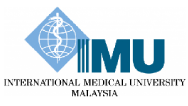Attitude, knowledge and ethical perception toward precision medicine among junior and senior medical students: Findings from one Malaysian medical school
Authors: Kwee Choy Koh, Shanmugan Goonasakaren, Lam Kean Ng, Yi Lin Chua, Jia Ying Lee, Alaric Ding Tian Ang.
ABSTRACT
Background: Medical schools are escalating changes to meet the need for doctors competent to work in the era of precision medicine. Information on the current level of awareness of precision medicine among medical students can help effect the necessary changes in the medical curriculum. A cross-sectional comparative study was done to assess the knowledge, attitude and perception toward the practice of precision medicine among junior and senior medical students in a medical school in Malaysia.
Materials and Method: A survey instrument measuring attitude toward precision medicine, perceived knowledge of genomic testing concepts, and perception toward ethical consideration related to precision medicine, was distributed to junior and senior medical students. Comparisons were made between senior and junior medical students.
Results: Only about one-third of the 356 respondents had heard of precision medicine although 92.7% expressed interest to learn more about precision medicine. Overall, junior and senior medical students had positive attitude toward the adoption of genome-guided prescribing and precision medicine but were uncomfortable with their knowledge of genomic testing concepts. Both junior and senior students were largely well grounded in their understanding of ethical issues related to precision medicine.
Conclusions: Knowledge of precision medicine was low among junior and senior medical students. Although the students supported the use of precision medicine, they did not feel adequately prepared to apply genomics to clinical practice. Their perceptions on ethical issues related to precision medicine were sound. Seniority did not appear to influence the perceptions of the students.
Keywords: precision medicine, personalised medicine, medical students, medical practice, medical education.
Citation: IeJSME 2017 11(3): 10-19

